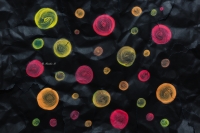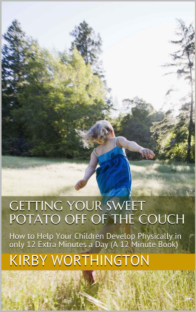Rainy Day Art Activities
 Bubble Art
Bubble Art
Stage 1: When teaching a child to blow through a straw, have them put it in their mouth and hold their hand at the other end so that they can feel the air come through the straw when they blow out (instead of sucking in).
Stage 2: Since children are more accustomed to sucking in than blowing out, use water in a glass to show the difference. Place the straw in the water and have the child blow bubbles in the water to practice blowing out.
Stage 3: Once accustomed to blowing out, try making bubbles with soap. Put a little dish soap in water and blow with the straw. It is recommended that you do this in the bathtub, in the kitchen with a towel on the floor, or outside. This should make a lot of bubbles!
Stage 4: Now we get to the bubble art. Add tempura paint (not a lot is needed, just enough to color the bubbles) to the soapy water. Blow the colored bubbles onto a piece of paper (use scrap paper if this is an experiential activity and recycle at the end).
As the child learns to blow the bubbles up into the air, they can touch the paper to the bubbles mid-air. Different colors could be added though it is recommended that you let each color dry before adding a new one. Older children can do bubble art on stationary to give as gifts, just be mindful of too much paint or dark colors if the page is going to be written on later.
Shaving Cream Fun
To make this activity as easy as possible for clean-up, set up on a table that can safely handle wet things and/or on a pan/tray/plastic placemat. Place a blob of shaving cream in front of the child. If it is their first time doing this, spread it out smoothly for them and they can start finger painting in it. This can also be a learning activity using letters, numbers, pictures, etc. For many children, the feeling is a fun sensation. This is also a great activity to do before dinner because when finished they can go in and wash-up for dinner AND it’s so fun that it stretches them through the hangry time before eating.
In preparation, cut different shapes out of colored cardboard (can be from any source). Use these different colors and designs to lay out an assortment on a tray from which to choose for the child. These can be used to make a picture. Big shapes can be used on the living room floor. Find more here.
Sand Art
It’s helpful to put down a sheet/old shower curtain before doing this project. If you’re at the beach, just take out some paper plates and collect sand. If you’re using white sand, colored plates might work best. Little glue bottles can be distributed to older children, and younger children can use some glue in a jar lid. Paint the glue on paper. Children are putting glue where they want sand to be. After having painted with glue, sprinkle the sand on the page. Then shake it off. If you’re using fancy colored sand, having a tray under the paper so as to collect and reuse the excess sand may be wise. If so, one color at a time would be good. If so, put the glue where you want the specific color to go and sprinkle that color sand. After dumping off excess, put more glue on paper for the next color. (Pre-schoolers do better with just one color as they typically don’t want to stop painting with the glue.) Small word of warning: be careful not to let the glue dry before you put on the sand.
You can use colored paper plates. Or cardboard/white paper that you’ve colored on. This game is for learning colors. You always start with two colors in order to be less confusing to the children. For instance, if there are five kids, you would have five blue plates and five yellow plates. The kids start on one side of the room, with the plates down the other side – all mixed up. The adult then says, “When I say a color, rush over (walk quickly, if desired) and pick up the color I said.” The little ones may need guidance over to the plates. If they pick up another color, say nicely, “Oh good. That’s blue. Where’s yellow? Bring it back to me.” This activity is helpful because it gets exercise out and enhances learning of colors. You’ll want to add in colors as they learn more. Get more ideas here.
Related Posts
By accepting you will be accessing a service provided by a third-party external to https://growthandgiggles.com/

